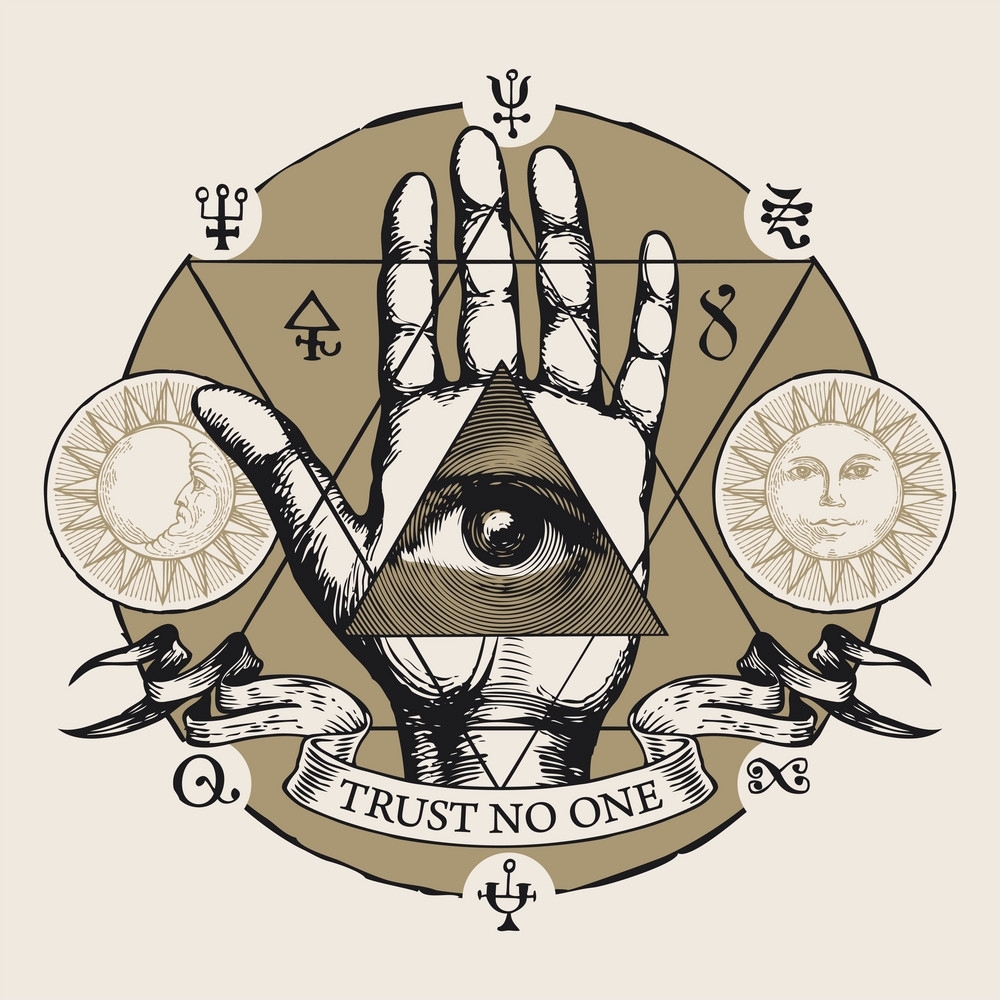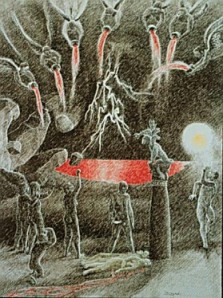“When I came across this website in a search on the Great Whore of Babylon, I was astounded by Professor John Steczynski’s gorgeous drawings covering the entirety of the Apocalypse, 42 in all, and his imaginative rendition of Babylon’s Beast and the Great Red Dragon and sought permission to reproduce two of them at high resolution in KAOS. The intricacy of the style of fine-line hatching and also the intensity of the colour, particularly the red of the dragon in otherwise monochrome images, comes out more than it does in the low resolution scans on the website. Prof. Steczynski, of Boston College, has for the past twenty years made pen and ink drawings and painted liturgical hangings. He states that his work comes out of the modernist rejection of explicit religious imagery that has occurred since the 1950s, that has, as he puts it, “begun to give way to a post-modernist absorption of ethnic traditions strongly imbued with religious themes”. His choice to focus on the Apocalypse of St John during his sabbatical leave in 1997–1998 was inspired by the forthcoming millennium, given that many people associate “millennium” with the Apocalypse. He expands on this:
‘There was a more pressing impetus, however. The extreme right might try to find ways to manipulate the appeal that the Apocalypse already has for Christians of a more fundamentalist orientation to promote its own political agendas for the millennium. I wanted my Apocalypse to remain true to John’s vision, manifesting its full intensity. At the same time I wanted to embody a broader, more humanitarian understanding than others might, avoiding vindictive divisions into black/white, good/evil, us/them. I wished to affirm a God of love.’
I was curious whether there was any reason he had decided not to draw the dragon or beast with horns, wondering whether it was to represent a more serpentine creature, something that looked like it may actually have existed:
‘The question about the horns: the main reason was seeing the awkwardness which Dürer and others had in dealing with the unequal number of heads and horns and crowns. John probably had specific symbolic significance to each of these, but he was writing and not creating images. I guess I simply felt I wasn’t able to find a satisfactory solution. I think I included horns in my earliest sketches. Probably if I decided it mattered enough, I could refocus on the problem and see what I come up with.’
Steczynski’s Apocalypse images are crying out to be published in a fine-art rendition of the Book of Revelation.”
– Joel Biroco, KAOS


